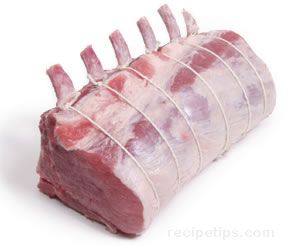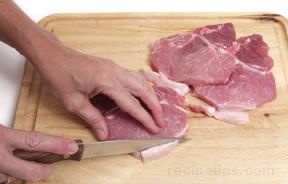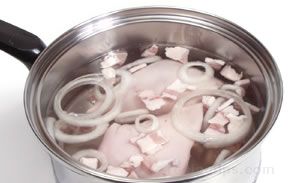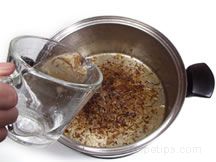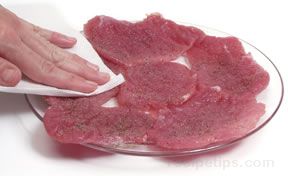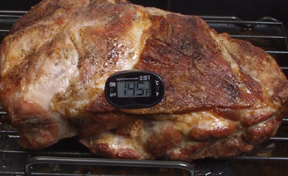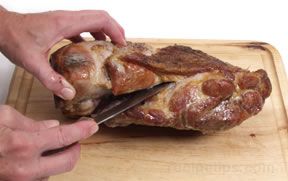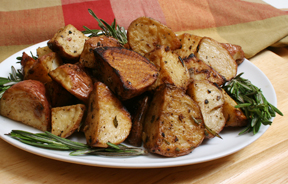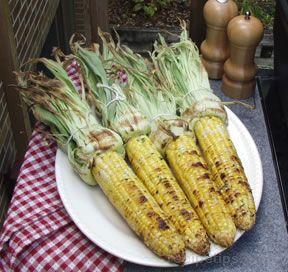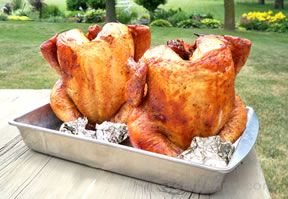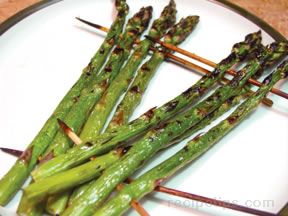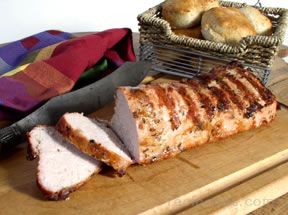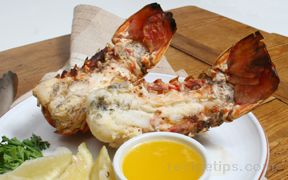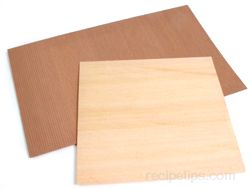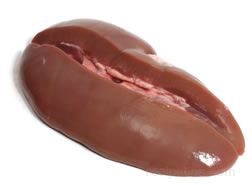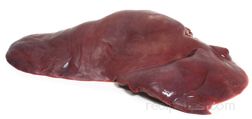|
The main difference between the methods is that grilling applies the heat to the bottom surface of the meat, and broiling applies heat to the top surface. Also, grilling infuses the pork with a smoky flavor from the meat juices that drip during the grilling process. When broiling, this infusion of flavor does not occur. Grilling and broiling are ideal for cooking smaller pork cuts, such as chops, steaks, ham slices, tenderloins, ribs, ground pork patties, sausages, and kabobs. Because grilling and broiling use high heat and short cooking times, it tends to toughen the meat, so it is best to use the most tender cuts available. Lean pork cuts will benefit from marinating before they are grilled or broiled. Pork steaks and pork chops that are going to be grilled or broiled should be a minimum of ¾ to 1 inch thick because the high heat will cook the meat quickly. If the cuts are thinner than this, it is easy to overcook the meat, causing it to dry out. The meat must be watched carefully while cooking by either of these methods. Coating the pork with a little oil or marinating it before cooking will help keep it moist. It is important that the heat source be properly preheated so that it seals the juices into the meat quickly. The temperature at which the pork is cooked and the distance it is placed from the heat source are both important for providing tender, juicy, properly done pork.
| ||||||||||||||||||||||||||||||||||||||||||||||||||
|
Indirect Heat Grilling on Charcoal Grills Once the meat is prepared and the charcoals have been heated properly (see Charcoal Grill Setup), there are several easy steps to follow in order to cook pork with indirect heat on a charcoal grill. | |
|
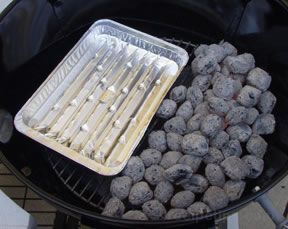 |
|
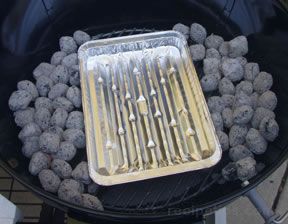 |
|
 |
| |
|
Indirect Heat Grilling on Gas Grills Once the meat is prepared and the gas grill have been heated properly (see Gas Grill Setup), there are several easy steps to follow in order to cook pork using indirect heat on a gas grill. | |
|
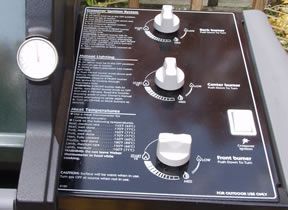 |
|
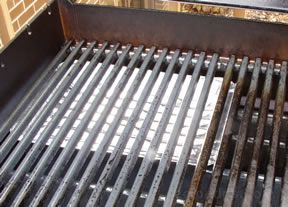 |
|
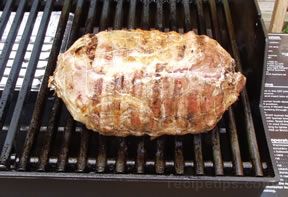 |
|
 |
|
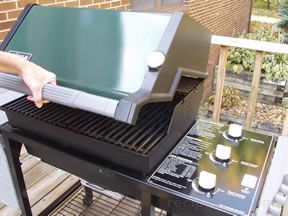 |
|
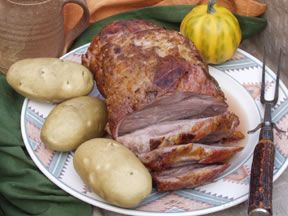 |
Direct Heat:
Cooking with direct heat occurs when you cook the meat directly over the heat source. The meat is cooked quickly over medium or high heat coals or over burners set to medium or high heat on a gas grill. Direct heat is used when grilling food that cooks in 30 or less minutes, such as chops, steaks, ham slices, ground patties, and precooked sausages. Fresh sausages should be poached to precook before grilling or they should be grilled using indirect heat.
| Direct Heat Grilling on Charcoal Grills | |
|
 |
|
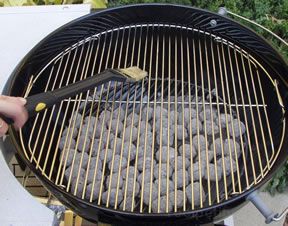 |
| |
| Direct Heat Grilling on Gas Grills | |
|
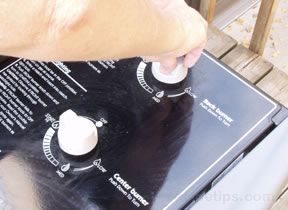 |
|
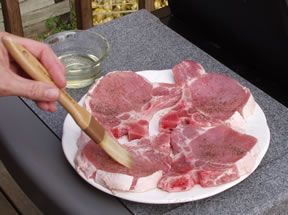 |
|
 |
|
 |
|
 |
|
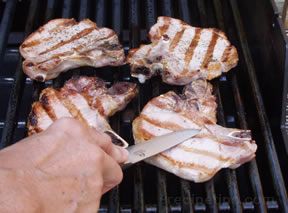 |
|
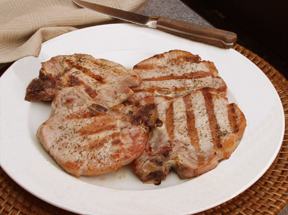 |
| |
Broiling
The benefit from the infusion of smoked flavoring that occurs when grilling does not occur when broiling pork. It relies on the caramelizing of the surface, or the addition of seasoning to enhance the flavor. Flavor can be added by the use of a mixture of herbs, marinades or basting sauces.
As with grilling, the distance from the heat source is important for proper cooking. You want to produce a pork cut that has a golden brown surface and a juicy, tender inside that is thoroughly cooked but not overcooked.
To check for proper cooking distance when broiling:
- Place a cut of pork on the broiler rack and place the rack on the broiler pan. Set the broiler pan in the oven and measure the distance from the heat source in the oven to the top of the meat.
- The distance should be 3 to 6 inches, depending on the thickness of the cut. Thinner cuts, under 1 ½ inches, should be approximately 3 to 4 inches away and thicker cuts, over 1 ½ inches, should be 4 to 5 inches away.
- Pork cuts that benefit from slower cooking, such as ribs, should be placed 5 or 6 inches away from the heat source.
- After determining the desired broiling distance, adjust oven racks accordingly.
To begin broiling:
- After the oven racks are adjusted properly, place the empty broiler pan and rack back in the oven and preheat it for 9 or 10 minutes.
- Once preheated, the meat should be placed on the preheated broiler rack and then placed in the oven to broil. Do not line the broiler rack with aluminum foil because it will prevent the drippings from falling into the pan below and then flare-ups may occur.
- It is necessary to watch the meat carefully as it cooks, making sure it is not cooking too fast and if it does, adjust the heat accordingly.
- When one side is nicely browned, turn it to the other side to finish cooking.
The length of time a cut of pork should be grilled or broiled depends on the size and thickness of the cut and whether it is bone-in, or boneless. The best way to determine if the cut has cooked long enough is to check for doneness. It is important not to overcook pork or the result will be a tough and dry cut of meat, but if under cooked it will not have the proper flavor or texture. It also needs to be cooked to the proper doneness to make it safe to eat. Shown below are signs to look for to determine doneness.
- Apply pressure to the cut by pressing it with the flat side of a knife. If the cut feels slightly firm it is done but if it is soft and springy, it needs to be cooked longer.
- Cut into the meat and check meat to see that it is opaque in color. When cooked to medium doneness there may be slight traces of pink in the middle.
- To ensure doneness, check with a meat thermometer. A thermometer inserted into the thickest part of the cut should produce a temperature of 145°F for medium doneness (160°F to 165°F for well done).
For best results, the meat should be removed from the heat source when its internal temperature reaches 135°F to 140°F and then allowed to rest (a waiting period before carving) for 10 to 15 minutes. Smaller, thinner cuts only require a resting time of 3 to 5 minutes. During this time the meat will continue to cook and will reach the 145°F. Resting also allows the juices to be distributed through the meat.
Grilling and Broiling Tips
- Preheat grill or broiler to the proper temperature to ensure the meat surface is seared quickly to give it a flavorful crust.
- To prevent the meat from sticking, use clean racks and coat them with vegetable oil or a nonstick vegetable oil spray.
- To keep chops, steaks and ham slices flat while grilling and broiling, clip the fat and rind around the edges at 1 to 1 ½ inch intervals.
- When grilling, aromatic woods such as hickory, mesquite, apple, or cherry can be added to the preheated coals to give the meat a distinctive flavor.
- Do not use a fork to turn the pork cuts as they cook. The piercing causes juices to escape. Use tongs to turn.
- Leave an area in the charcoal grill without coals so that if a flare up occurs or some of the meat is cooking too fast, you can move the meat to this cooler area. On a gas grill, leave one burner on low.





